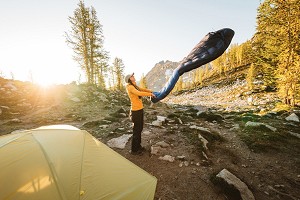
Therm-a-Rest's Questar sleeping bag range (which runs to three models) works well with the new Prolite Apex self-inflating mat if the priority is a comfortable night's sleep. Over the last few months we've taken this mat and sleeping bag combination on a variety of trips, from campsite camping, to cold overnights in the hills, and bivvying by mountain crags in the summer months. While this setup is not the most compact for the weight conscious among us, there's a lot going for it if you want something versatile for all-round use.
Questar 32F/0C Sleeping Bag - £215 to £255
The Questar range of sleeping bags is focused on a comfortable night's sleep for backpackers and hill goers that don't want to obsess over ultralight and often ultra-expensive materials and designs. The bags come in three different temperature ratings: 0C, -6C and -18C, all comprising 650 fill power down, with each model available in three lengths. We tested the three-season 0C sleeping bag from late Spring to Autumn, in situations where a lightweight and packable sleeping bag was nice to have but not the top priority over a warm and comfortable sleep.
Price
Small: £215
Reg: £235
Long: £255
Weight and pack size
Different sizes are available: ours is Regular. The Questar 0C comes in at 854g on the home scales without its stuff sack, which is in agreement with Therm-a-Rest's stated weight (Small is 760g, Large is 880g). With the stuff sack this takes it up to 925g. Although a respectable weight, it is not close to the lightest on the market for its temperature rating. However, you will see some savings in price and an increase in comfort from its fit, if you have a tendency to move around in your sleep or sleep on your side. For this reason, the Questar shouldn't be snubbed, especially if your objectives aren't tailored primarily around being fast and light.
When packed and compressed into the stuff sack the bag is a manageable size, something like a watermelon - Therm-a-Rest state 4 litres. The bag packs away easily, and the stuff sack has four pull tabs to smoothly and uniformly compress it (when storing between trips, a storage sack is also provided to ensure loft is maintained). In the lower temperature-rated bags in this range, you will incur additional weight and volume when packed, due to the increased amount of fill. For more weight-critical winter mountain use, these probably wouldn't be the first sleeping bags on the list.
Warmth and temperature rating
In accordance with standard EN ISO 23537 The Questar 0C/32F is rated in the following:
- Comfort 5C - temperature range where a standard woman is comfortable and "not feeling cold" in a relaxed position.
- Transition/Limit 0C - A standard man is "in a situation of fighting against cold (curled up inside the sleeping bag), but in thermal equilibrium" and not shivering.
- Risk -15C - "In this range, a strong sensation of cold has to be expected. There is a risk of health damage by hypothermia. A sleeping bag should only be used in this range in an emergency".
For more on understanding sleeping bag temperature ratings, see here:
Considering that these are controlled lab-tested ratings, there are a number of factors that will also play a part in your perceived warmth that will vary from person to person, night to night, and the environment and conditions on the night. It's worth noting that the perceived warmth of the bag in use will also depend on the quality and appropriateness of the sleeping mat being used to insulate you from the ground.
Note: The Questar was predominantly tested and reviewed alongside the Therm-a-Rest Prolite Apex (reviewed further down).
Warmth during nights of sleep in warmer conditions in the UK summer was not an issue for this bag. On select trips, we were able to test this down to the lows of the comfort and limit range where the temperature dropped to around 0C. In these cold conditions, an extra mid layer and thermal trousers were worn to ensure I wasn't battling the cold, but at no point did the cold wake me up in this sleeping arrangement. I'd say that for UK hills the Questar 0C is definitely a 3-season bag, while the warmer models in the series would be the ones to look at for winter.
Fabric and construction
The inner fill is a 650 fill power Nikwax Hydrophobic Down - the higher the fill power the more loft the down provides to trap air, meaning greater insulating performance for a given weight. Whilst nowadays 650 fill power is no longer close to top tier, only 0.4kg fill weight is required in the bag, which should still demonstrate this as high-quality material. Therm-a-Rest also uses RDS certified down which ensures the animals in the down supply chain are treated humanely - you can read more about RDS certification here.
The hydrophobic coating is used to reduce the down's ability to absorb water (up to 90% less water according to Thermarest) and also help the down dry faster. Hydrophobic down sleeping bags seem to be a somewhat controversial subject within the industry due to the treatment's longevity in comparison to the lifespan of the bag itself. However you swing on the treated down debate, it's a feature that may be a factor to consider if you expect to be in repeated or prolonged wet conditions.
The outer is a 20 denier polyester which helps keep the weight down and feels tough for general camping and bivvying use. This is also finished with a DWR which I've found has performed well on mornings where there has been a heavy dew when bivvying in the Cairngorms. DWRs tend not to last for repeated years of use so this may need reapplication if this is important to you.
The inner is a 20 denier polyester taffeta which has nice silk-like and non-clammy feel against the skin. There has been the occasional down feather that I have noticed when taking the Questar out of its lofted storage bag, but I can't work out where they had originated from and there are so few that it's not significant enough to cause any concern or really impact performance.
Therm-a-Rest have also utilised a horizontal box-baffled construction that uses mesh walls between the down compartments to maximise loft and minimise cold spots from stitching which would pierce through the full construction. On top of this, the insulation is placed where it is needed most by zoning the majority on the top of the bag in order to reduce heat loss in critical areas, and less on the underside which is naturally being compressed by your body, thus reducing insulating effectiveness.
Size and shape
In this model, three sizes are available: we tested the regular size which is suitable for those up to 1.83m/6 foot. Therm-a-Rest provides a full list of dimensions on their website for each size.
The shape is what Therm-a-Rest calls their "W.A.R.M" fit, which stands for "With Addition Room for Multiple Positions". It's worth pointing out that this is a fit that's likely to offer reduced warmth as there is an increase in dead air space as opposed to a tighter fit which would offer greater warmth (as there is less air to heat up). Criticism of the ironic misnomer aside, this fit does offer much more in the way of comfort in comparison to a tighter bag - especially if you are a side sleeper or like to move around in your sleep. For myself - most prominently a side sleeper - I found the fit to be the defining feature of this bag.
I can comfortably lie on my side with my arms out to the side, just as I would in my own bed. This makes a significant difference to the quality of sleep that I get in comparison to the restraint of a tighter fitting sleeping bag, in which I can often have my sleep interrupted by not having the same freedom that I am used to. Typically in a tighter sleeping bag, I will roll with the bag on its side for the sake of comfort, which in many cases can affect the bag's performance by orienting the less insulated back zone to the side such as in the Questar. I also tend to do a lot of car camping throughout the spring and summer months where comfort is king, so this fit really makes the most sense for a versatile sleeping bag to tick my major boxes.
The increased width of this bag does make it slightly less suitable when bivvying on a narrower mat on grass, as the sides tend to spill over the mat and get wet (assuming you're not using a bivvy bag). I would also assume this area without an insulating mat underneath will reduce the effectiveness of the sleeping system. In practice, this is hard to measure and I did not feel any perceivable cold, but it's something to note and may affect users in different scenarios.
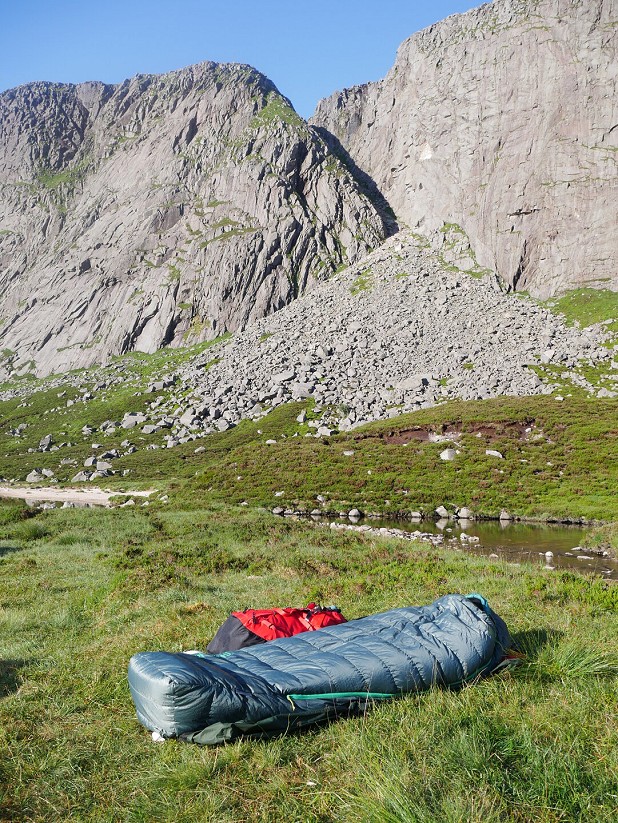
Features
To minimise heat loss, there is a neck area draft collar and cinchable hood. These all feel very standard and sit comfortably whilst at rest but cinching the hood takes a bit of adjusting to fit correctly when tight, as it tends to pinch one side of the hood initially.
As with many Therm-a-Rest sleeping bags, this one comes with 'SyngeryLink Connectors' which are essentially elasticated loops to secure the bag to your sleeping pad. In a bag such as the Questar where the fit allows the user to easily change position I have really liked having these as it stops you rolling off the mat which will ensure you are always thermally insulated from the pad below. It also helps the bag remain in the correct orientation so that if I do roll around, then the bag will not end up sideways which will reduce the effectiveness of the zoned insulation. I have used these in a tighter fitting bag and found them to feel slightly more restrictive, so the principle may divide opinion.
The "toe-asis" foot warmer offers an insulated pocket at the bottom of the bag where you can tuck your feet to ensure they stay warm. Sitting with only one foot inside of this it does seem to warm my feet up slightly faster than without. More than that, the pocket feels luxurious and snug.
The snag-free zipper really is nicely designed, I feel it's hard to actually try to snag this, which is much appreciated when using it in the dark. The zipper is full length and accompanied by a full-length draft tube which helps stop the transfer of heat through the zipper itself.
The external zip pocket is large enough to store a phone or small electronics, although personally, I would have preferred this being inside the bag itself both for ease of access and to keep any batteries warm if they are susceptible to reduced performance from the cold.
- For more info on the Questar 32F sleeping bag see thermarest.com
Prolite Apex Sleeping Mat - £150 - £165
The ProLite Apex adds to the well-established ProLite self-inflating sleeping mat range, by offering increased warmth and comfort which claims to take you further to the edges of three-season cold conditions. Though it's lightweight and packable, we still found it offered a good night's sleep, making this a good all-rounder for car camping as well as backpacking.
Price
Reg: £150
Reg Wide: £160
Large: £165
Warmth and comfort
R-value is the measure thermal resistance - a higher R-value, the more thermally resistant the mat is. The ProLite Apex gives an R-value of 3.8 in accordance with ASTM 3340-18, which is generally recommended for cool 3-season conditions, but it's not a winter-rated mat (unless you double it up with something else).
Lab-tested R-values aside, how does this insulation translate into real-world practice? I have tested this on cool nights at the end of Autumn where the temperature dropped to low single digits and I had no complaints of cold spots underneath me.
The extra warmth of this self-inflating mat in comparison to its brand counterparts (Prolite and Prolite Plus) comes largely from the differences in its inner foam construction, which Therm-a-Rest have named StrataCore. This offers a continuous layer of thermally insulating open-celled polyurethane foam between ridges of air and foam. A similar take on this continuous foam design can be seen in the likes of Sea-to-Summit's Delta Core which their Comfort SI Mat range utilises. This continuous structure differs from the die-cut foam used in many other mats which will possess vertical or diagonal channels to reduce weight and bulk, but which more readily allow air to pass through the mat.
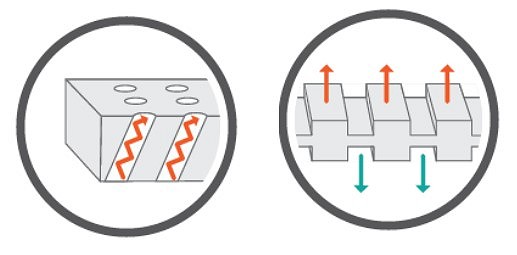
The ridges and cushiony foam inner evenly distribute weight to provide a comfortable level of support for the mat's 5cm thickness, so I've found you get a comfortable night's sleep. The horizontal baffles won't be to everyone's taste. My last mat was vertically baffled, which I personally prefer as it cradles the body, but with the Questar's synergy link straps around the mat, I needed to worry less about tossing and turning off mat.
Shape and dimensions
The Prolite Apex comes in three different sizes, Regular (W: 51cm, L: 183cm), Regular Wide (W: 64cm, L: 183cm) and Large (W: 64cm, L: 196cm). We tested the Regular.
A tapered mummy-like shape allows the mat to save weight at the leg end whilst maintaining enough room in the body to keep warm and comfortable. I am 180cm tall and a slim build which made the length in the regular size just long enough and the width adequate with my arms by my side whilst on my back. Those who are broader or find particular comfort sprawled-out side sleeping may find use in the regular-wide size, although there will be an added weight and bulk penalty - it is also worth considering if they will fit side by side against your partner in your tent.
Weight and pack size
At 0.625kg on the home scales in regular (Therm-a-Rest quote 0.62kg, 0.72kg and 0.85kg for the three sizes) it is lightweight for a self-inflating mat of this warmth and thickness - although you can get lighter at this level of performance. As a comparison, its weight comes in slightly below the likes of Exped's similar SIM UL 5 M.
It can pack away quite small for a self-inflating pad, but not ultra-compact, coming to something around the size of a large melon. Two compression straps around the circumference keep the bulk to a minimum.
Fabric and materials
The 50 D polyester print wraps the entire mattress and feels tough for a good amount of abuse unless pressed or scraped up against sharp rocks - a definite plus in comparison to the likes of Therm-a-Rest's popular NeoAir Xlite.
The fabric is also less noisy than other pads that I have tried, like the NeoAir XLite, although this might be partly down to shape and design rather than the fabric itself. If you're not going all-out for lightness, the durability and quietness are definite considerations here.
Inflation and deflation
This is a self-inflating mattress; simply open the valve and wait for around 10-15minutes. Once the foam is at its peak "self-inflation", two to four more puffs usually get me to my desired inflation - no more passing out in my tent after accidentally hyperventilating. The mat's insides won't be harmed by the moisture in your breath.
It's important to note that a mat straight from the factory will not immediately self-inflate as it has been stored compressed for an extended period of time where the foam's self-inflation memory has essentially become it's compressed state. To fix this simply store your mat with the valve open in an uncompressed state (under my bed usually works). This may be an issue for some if storage is tight.
The Winglock valve also helps inflation in comparison to more dinky valves (3 times faster than their classic valve according to Therm-a-Rest). In practice this is difficult to measure, but it certainly feels easy to twist open and close (even with gloves), its one-way valve works so that no air escapes between puffs, and it's large for the couple of puffs that the pad actually needs. Twisting these wings will open the valve to allow air to flow back out when ready to deflate.
- For more info on the Prolie Apex mat see thermarest.com
Overall Summary
If you're looking for a bit more comfort and versatility in your three season sleeping setup, and not just going for the lightest models available, then the Questar 32F/0C sleeping bag and Prolite Apex self-inflating mat make a really good combination. I really liked the comfort on offer when car camping, something I do a lot, but I also found both mat and bag were capable of use on climbing and walking trips in the Scottish hills. While neither is as light and packable as many modern counterparts, they're a good all-round option if you're only buying one set!



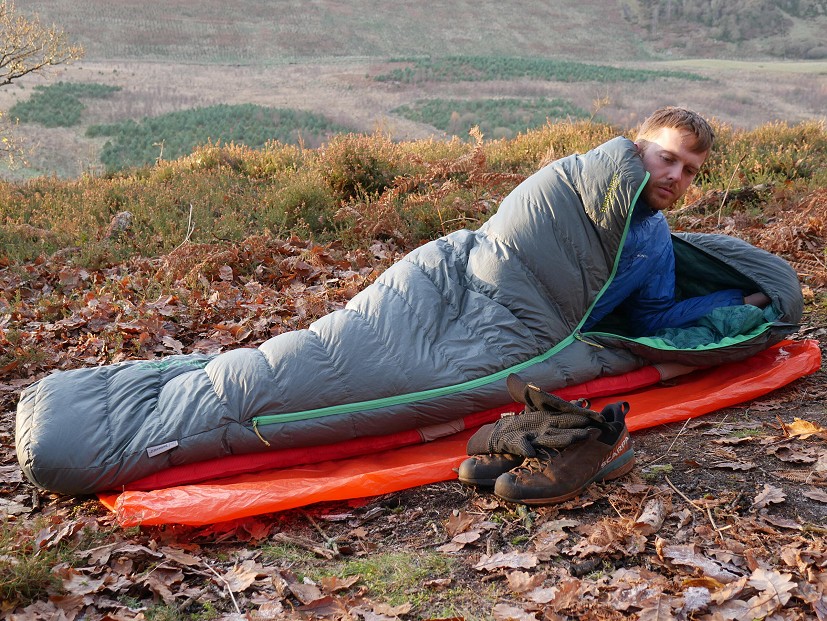
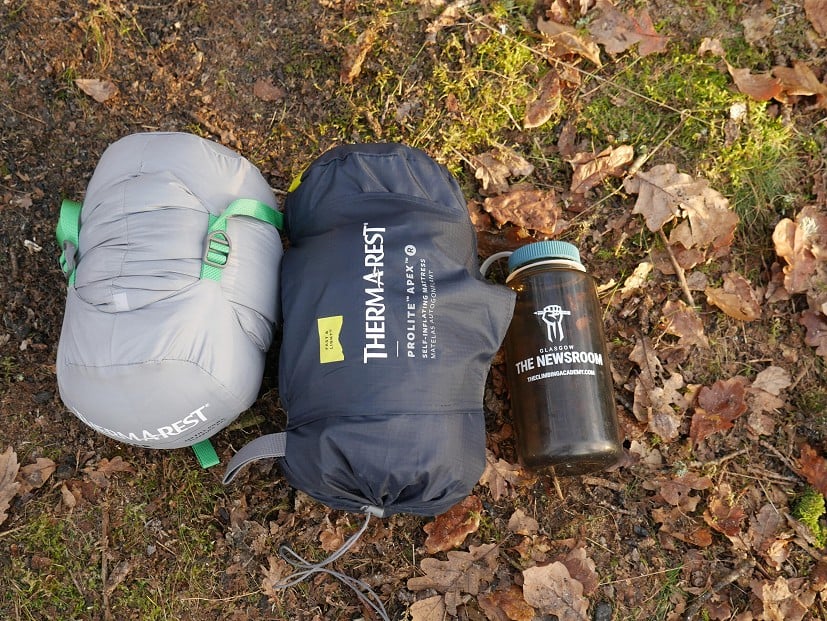
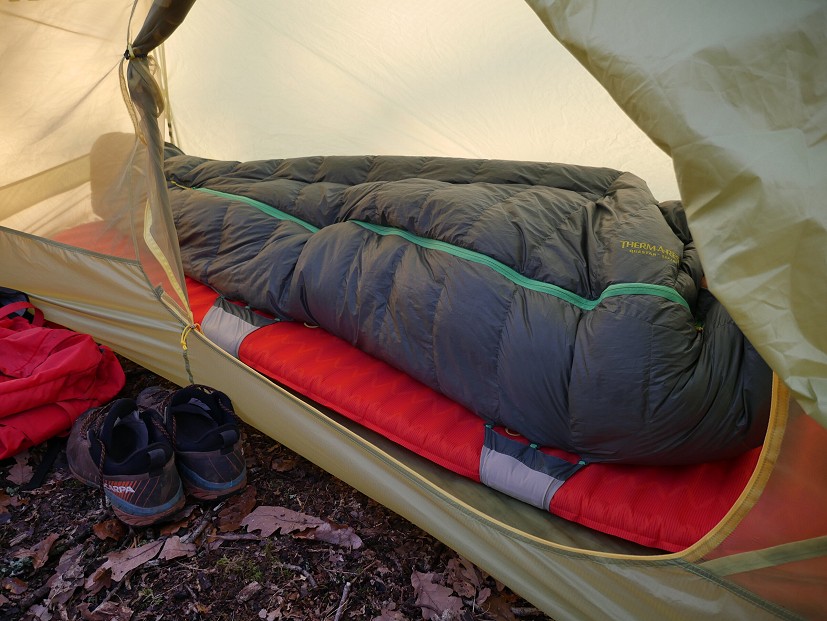
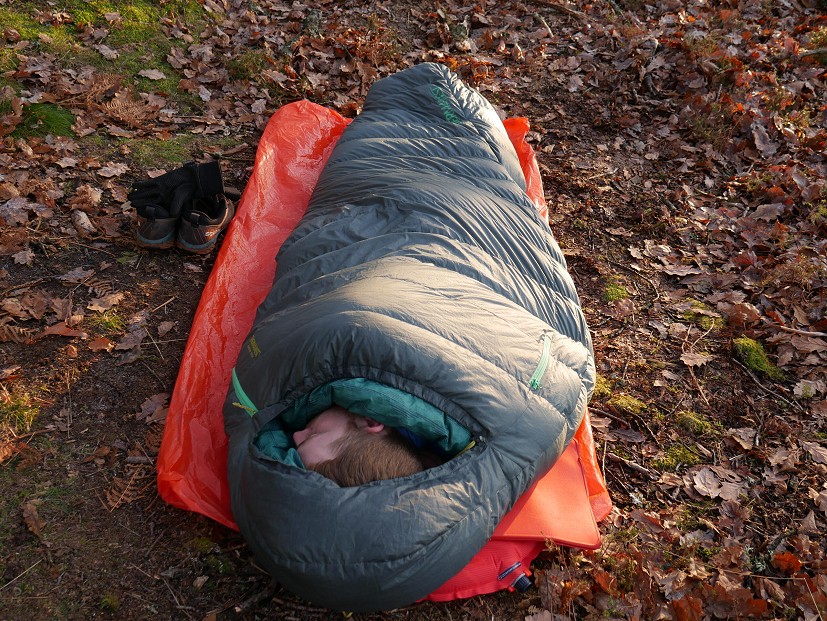
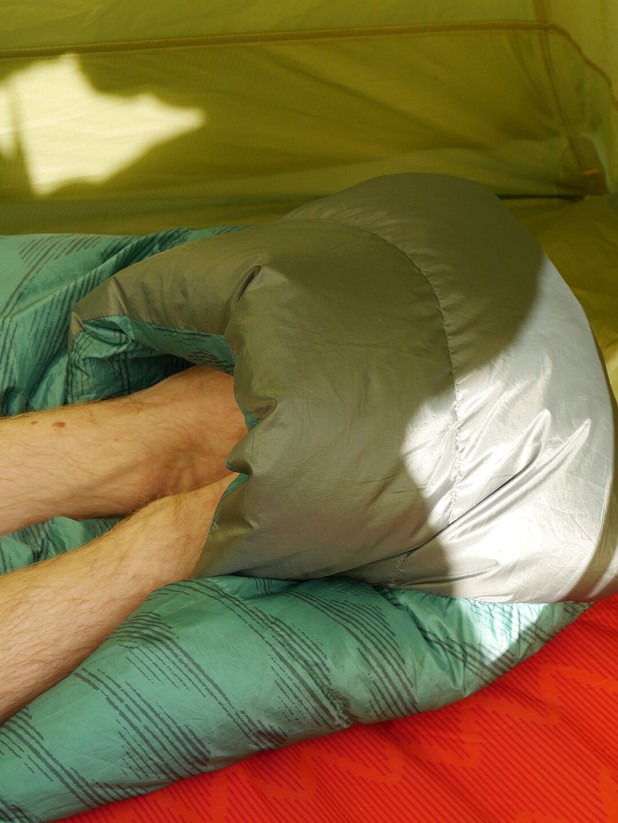
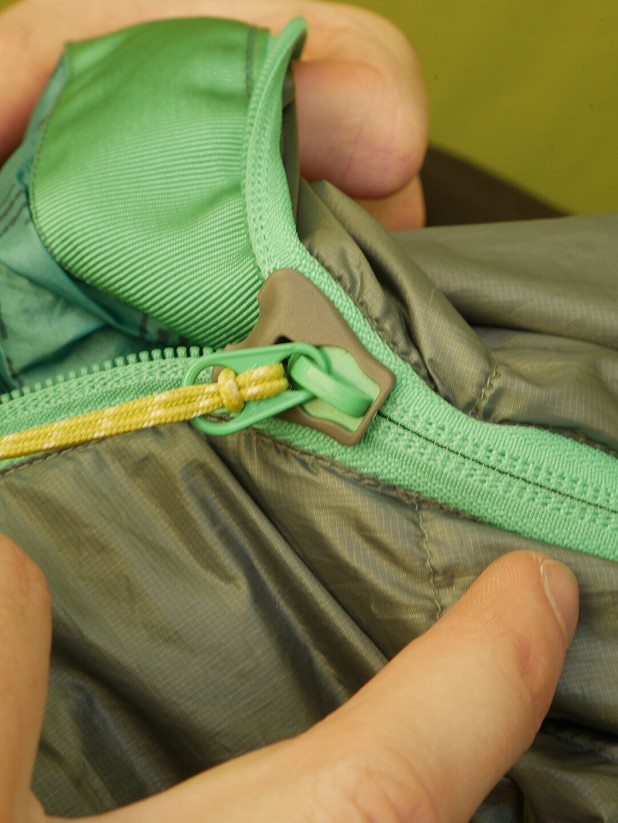
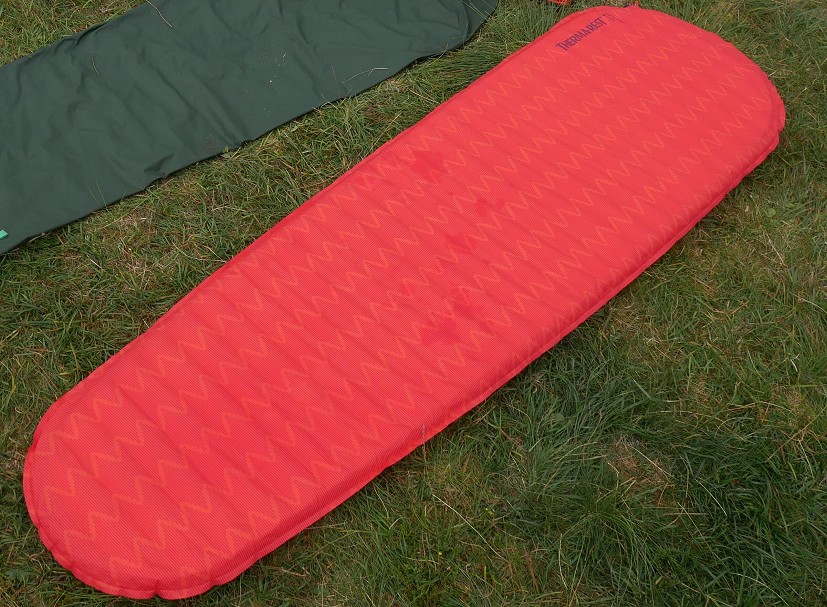
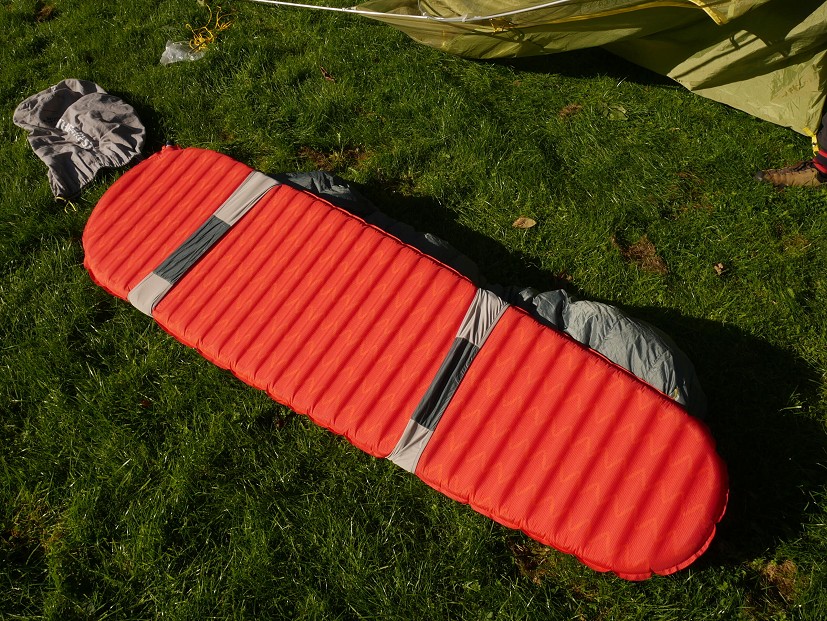

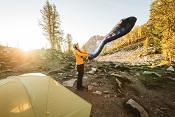
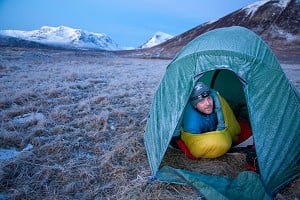

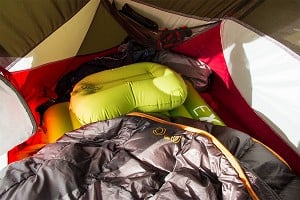
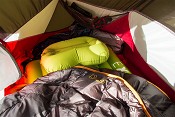
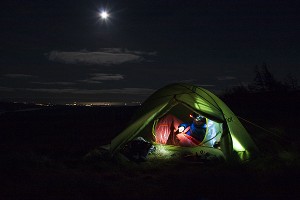
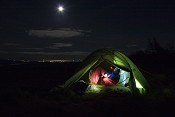
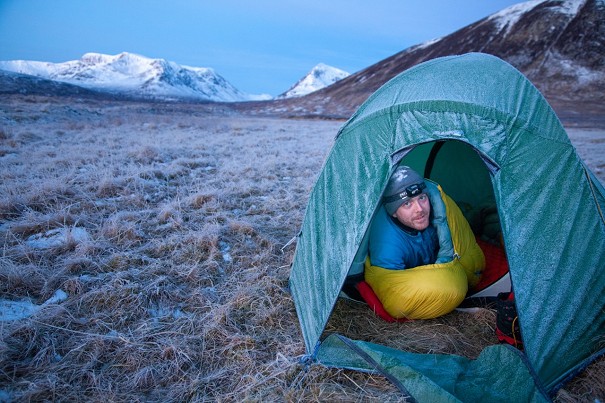
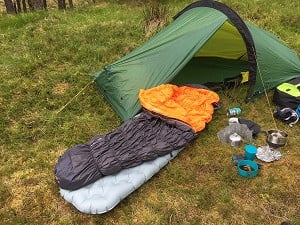

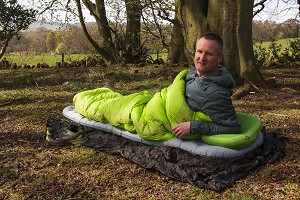
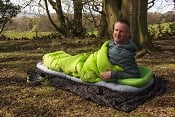
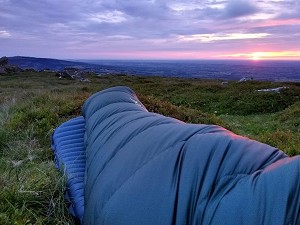
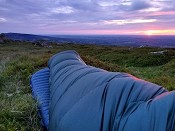


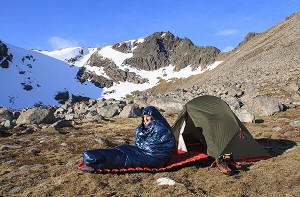

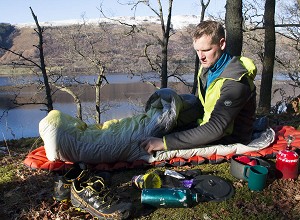



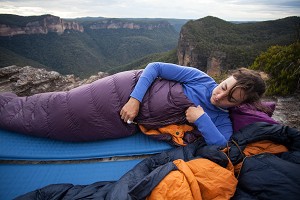
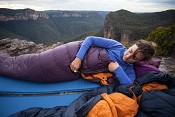
Comments
Great review!
Is that John kicked out the house and sleeping in Pollock park?